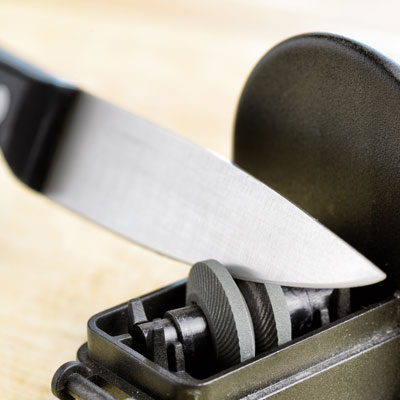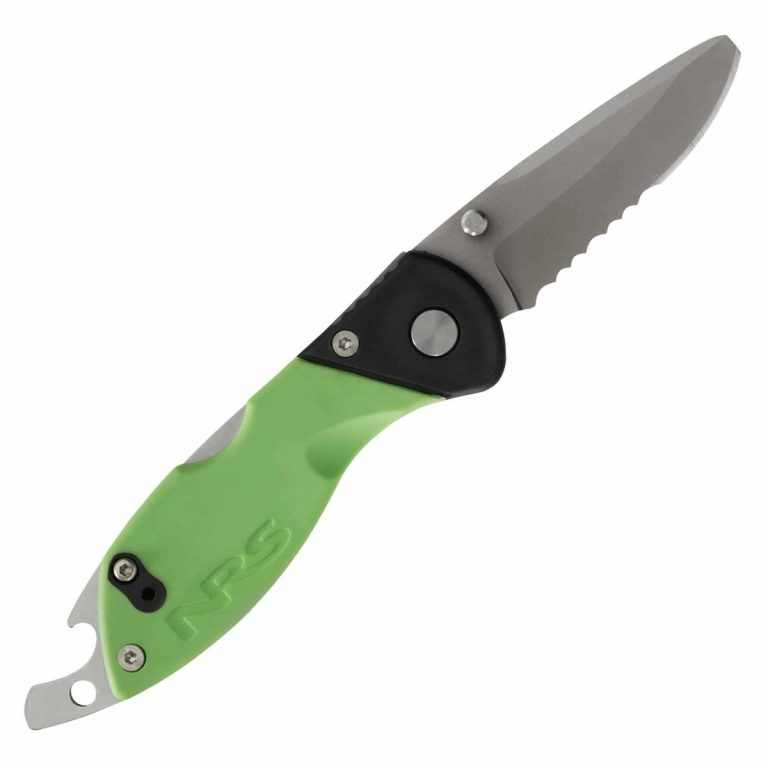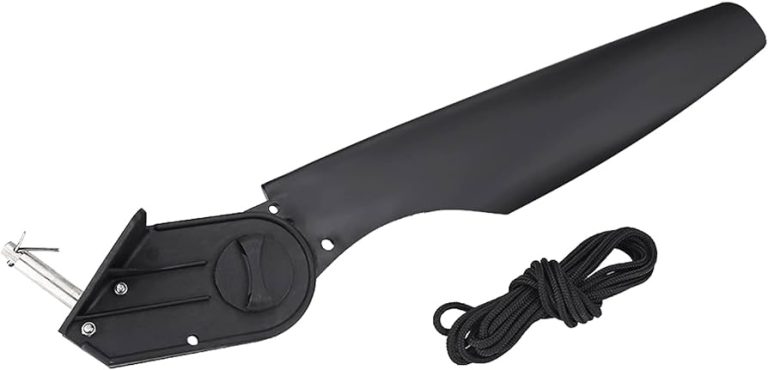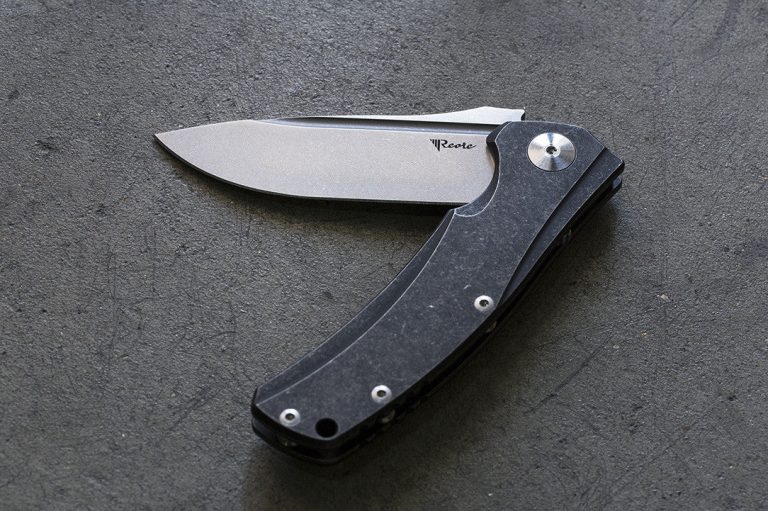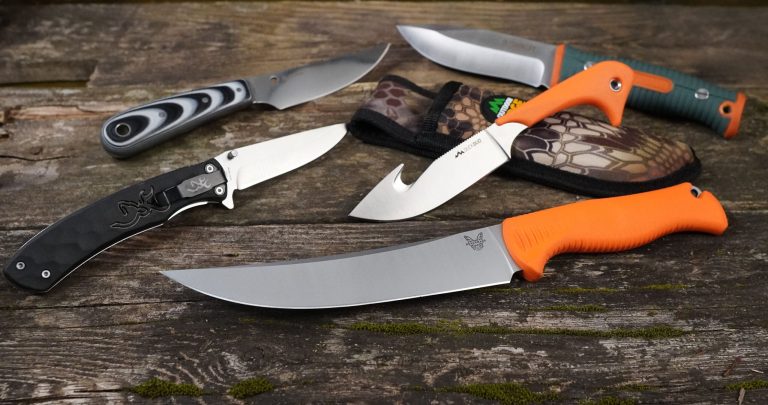The Anatomy of a Kayaking Knife
The Anatomy of a Kayaking Knife consists of a compact design and features such as a sharp blade and a comfortable handle which ensures safety and convenience during kayaking expeditions. An essential tool for any kayaker, a kayaking knife serves multiple purposes, including cutting ropes, slicing through tangled vegetation, and rescuing oneself or others in emergency situations.
Its compact size allows easy storage within reach, while a sharp blade enables efficient cutting and slicing. The handle, designed for a secure grip, ensures precise control and reduces the risk of accidents while handling the knife. Whether for recreational paddling or adventurous whitewater kayaking, a well-designed kayaking knife enhances safety and practicality, making it a vital accessory for any kayaker.

Credit: ospreybay.com
Importance Of A Reliable Kayaking Knife
A reliable kayaking knife is an essential tool for safety on the water. With its versatile uses, it ensures preparedness for various emergency situations. This multipurpose tool is designed to withstand the elements and provide quick access in critical times. Whether you need to cut through tangled ropes, free yourself from entrapment, or assist in rescuing others, a reliable kayaking knife can be a lifesaver. Its sharp blade and durable handle make it easy to use and navigate even in challenging conditions. Moreover, its compact size allows for convenient storage on your kayak or personal flotation device. When it comes to your safety on the water, investing in a quality kayaking knife is of utmost importance. Don’t compromise on your preparedness, choose a reliable kayaking knife and navigate the waters with confidence.
| Importance of a Reliable Kayaking Knife |
|---|
| An essential tool for safety on the water |
| Versatile uses for various emergency situations |
Features To Look For In A Kayaking Knife
A good kayaking knife is an essential tool for any outdoor enthusiast. When choosing a kayaking knife, there are several key features to consider:
| Compact and lightweight design | for easy storage and accessibility |
| Durable materials | that can withstand exposure to water and harsh conditions |
| Serrated and straight-edge blades | for different cutting needs |
| Non-slip handle | for a secure grip in wet environments |
A compact and lightweight design is crucial for easy storage and accessibility. You want a knife that won’t weigh you down during your kayaking adventures.
When it comes to durability, look for a knife made from materials that can withstand exposure to water and harsh conditions. Stainless steel is a popular choice for its rust-resistant properties.
Having both serrated and straight-edge blades offers versatility for various cutting needs. The serrated edge can be useful for cutting rope or other tough materials, while the straight edge is ideal for precise slicing.
An important feature to consider is a non-slip handle. This ensures a secure grip, even in wet environments, providing confidence and safety during your kayaking journeys.
Blade
A kayaking knife consists of various components, and one of the most essential is the blade. The blade serves as the main cutting component, so it’s crucial to choose the right material for durability and rust resistance. **Selecting a blade material** that can withstand the challenges of water sports ensures longevity and safety. **Opt for materials like stainless steel or titanium**, which offer excellent corrosion resistance.
Furthermore, the type of blade edge also plays a significant role in its functionality. There are two common options: serrated and straight-edge blades. **Serrated blades** are ideal for tasks that require cutting through tough materials like ropes or seatbelts, offering superior grip and control. **Straight-edge blades**, on the other hand, are great for precision cutting and slicing. **Consider the intended purpose of your kayaking knife** to determine whether you need a serrated or straight-edge blade.
Handle
The handle of a kayaking knife is designed with ergonomics in mind, allowing for a comfortable grip even during long hours on the water. The selection of materials used ensures a secure hold, especially when the handle gets wet. Additionally, the knife may have a finger guard, adding an extra layer of safety to prevent accidental injuries while using it.
Sheath
The sheath is a protective cover designed for the blade of a kayaking knife. It serves multiple purposes, including easy access and secure storage while out on the water. Attachment options for the sheath are crucial to ensure convenience and safety. Some kayakers prefer to attach the sheath directly to their life jackets, also known as personal flotation devices (PFDs), for quick and easy access. Considerations for attachment points on PFDs should be made in terms of quick-release mechanisms and secure attachment options.
Tang
Tang:
The tang is the connecting point between the blade and handle of a kayaking knife. It plays a crucial role in determining the knife’s strength and durability. Opting for a full tang knife is highly recommended as it offers superior strength and stability. With a full tang, the blade extends throughout the entire length of the handle, providing increased resilience and reducing the risk of breakage.
There are different types of tangs available, each with its own set of advantages and disadvantages. For example, a hidden tang is aesthetically pleasing as it is completely enclosed within the handle, but it may not offer the same level of durability as a full tang. On the other hand, a partial tang may be lighter and more affordable, but it may compromise the overall strength of the knife.
When choosing a kayaking knife, it is important to consider the type of tang that best suits your needs. A full tang knife ensures optimal reliability and is ideal for handling the demanding conditions of kayaking adventures.
Edge
The edge of a kayaking knife is critical for performance and functionality on the water. The blade’s cutting edge needs to be sharp and well-maintained to ensure efficient and effortless cuts. When sharpening the edge, it is important to consider the type of blade material and the intended use of the knife.
A partially serrated edge can provide versatile cutting options. The serrations allow for more aggressive cutting through tough materials, while the plain edge excels at slicing and precision cutting. This combination makes the knife suitable for various tasks during kayaking adventures.
Maintaining the edge involves regular sharpening and proper storage. A sharpening stone or a honing rod can be used to maintain the blade’s sharpness. Additionally, protecting the edge from rust and corrosion is essential for extending the life of the knife.
Maintenance And Care Tips For A Kayaking Knife
A kayaking knife is an essential tool for both safety and convenience while out on the water. To keep your knife in the best possible condition, proper maintenance and care are crucial.
After each use, it is important to clean and dry the knife thoroughly to prevent corrosion. Use a mild soap and warm water to remove any dirt or debris. Be sure to pay extra attention to the blade and handle.
Sharpening the knife regularly is also necessary to maintain a sharp edge. Various techniques such as honing and using sharpening stones can be employed to achieve this. Follow the manufacturer’s guidelines for the specific knife you own.
Proper storage is another vital aspect of caring for your kayaking knife. Find a dry and secure place to store it to ensure longevity and accessibility. Consider using a knife sheath or a dedicated knife storage box to protect it from moisture and other potential damages.
By following these maintenance and care tips, you can ensure that your kayaking knife remains in excellent condition, ready to assist you on your adventures.
Conclusion
The anatomy of a kayaking knife is an essential consideration for any kayaker, as it plays a crucial role in ensuring safety and preparedness on the water. From the blade to the handle and sheath, each component serves a specific purpose, be it cutting rope, starting a fire, or self-defense.
With a keen understanding of the different types of blades, such as a serrated or straight edge, and the materials used in the construction of the knife, kayakers can make an informed decision when selecting their ideal tool. Additionally, factors like size, weight, and ease of access must be taken into account to ensure maximum functionality and convenience.
By investing in a high-quality, well-designed kayaking knife and proper training in its usage, kayakers can confidently navigate the waters with peace of mind, knowing they are well-equipped for any unforeseen circumstances.


